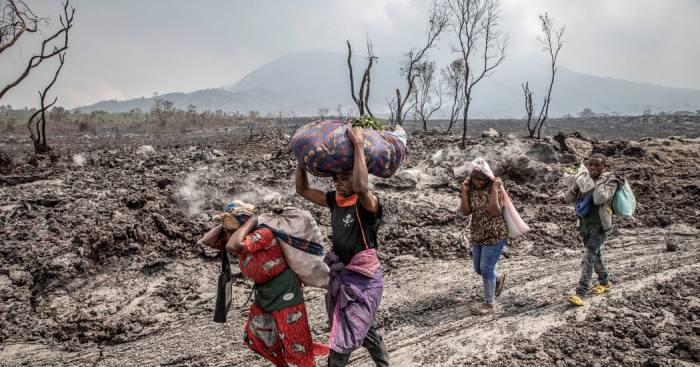source photo: https://lenexworld.com/
By Kabakura Jean Bosco Ceusi
The city of Goma in the eastern part of the Democratic Republic of Congo was nearly deserted on Friday 28 June after approximately 400,000 of its inhabitants fled following a preventive evacuation alert launched on Thursday that Mount Nyiragongo volcano might erupt again. Almost all of the shops and banks in central Goma were closed, and just a handful of people and some motorcycle taxis were on the usually bustling streets.
A report of an emergency meeting early Friday said 80,000 households – equivalent to around 400,000 inhabitants – had left on Thursday following the order. Most people headed for Sake and for the Rwandan border in the northeast, while others fled by boat across Lake Kivu.
The authorities geared up for major humanitarian efforts around 25 kilometres West of the city, where tens of thousands of people are now gathered.
Rwandan President Paul Kagame in an interview with AFP and France Inter late on Friday appealed for "urgent global support" to manage the crisis building up on the border with Congo. "We are having big numbers of people crossing the border. So we are trying to work with the Congolese side to deal with the humanitarian crisis that is unfolding , and need urgent global support to keep monitoring the situation ". Nearly 10,000 people are taking refuge in Bukavu on the southern bank of lake Kivu, according to Governor Theo Ngwabidje, many of them in host families. Other people spent the night in the open or slept in schools or churches.
“We have a problem with the water here, the children are not used to it and are starting to get disentery,” said evacuee Eugene Kubugoo.
“We don’t have anything to eat or any place to sleep.”
Aid efforts are being organised to provide drinking water, food and other supplies, and workers are helping to reunite children who became separated from their families. OCHA said more than 4,500 homes were destroyed by lava, affecting some 20,000 people.
‘Limnic’ risk
Friday’s report, issued after experts carried out a risk assessment at the volcano’s summit, said “seismicity and ground deformation continues to indicate the presence of magna under the Goma area, with an extension under Lake Kivu".
People should remain vigilant and listen to news bulletins, as the situation “may change quickly”, it warned. Volcanologists say the worst-case scenario is of an eruption under the lake.
This could release hundreds of thousands of tonnes of carbon dioxide (CO2) that are currently dissolved in the water’s depths. The gas would rise to the surface of the lake, forming an invisible cloud that would linger at ground level and displace oxygen, asphyxiating life.
In 1986, one of these so-called limnic eruptions killed more than 1,700 people and thousands of cattle at Lake Nyos in western Cameroon.






